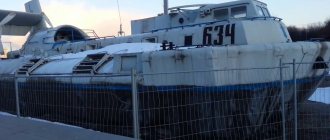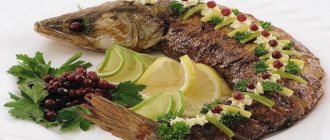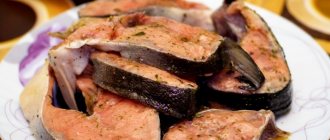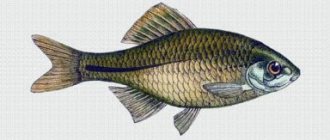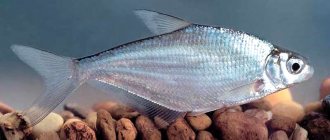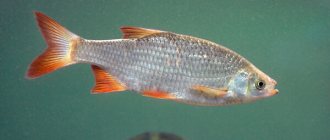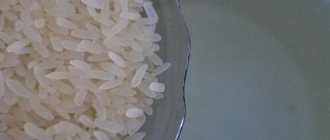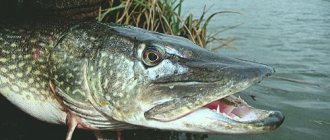Effective use of SVP
Hovercraft are used in cases where road, rail and conventional water transport cannot be used effectively. The Hovercraft can transport landing groups from a large landing ship to the shore at speeds reaching 60 knots (100 km/h).
Unlike conventional means of crossing, hovercraft can not stop near the shore, but can go further and even overcome a 5% rise or an obstacle up to a third of the height of the skirt. These vehicles can be used in shallow, clogged and arctic waters, and in open areas.
The idea of hovercraft propulsion was first formulated by the Swedish scientist E. Swedenborg (1716). Earlier than in other countries, SVP technology was taken up in Austria and Russia.
DIY SVP manufacturing process
Firstly, assembling a good hovercraft at home is not so easy. To do this you need to have the opportunity, desire and professional skills. A technical education wouldn't hurt either. If the last condition is absent, then it is better to refuse to build the apparatus, otherwise you may crash on it during the first test.
All work begins with sketches, which are then transformed into working drawings. When creating sketches, you should remember that this device should be as streamlined as possible so as not to create unnecessary resistance when moving. At this stage, one should take into account the fact that this is practically an airborne vehicle, although it is very low to the surface of the earth
Popular articles Microphone for Skype.
If all conditions are taken into account, then you can begin to develop drawings
The figure shows a sketch of the SVP of the Canadian Rescue Service.
Technical data of the device
As a rule, all hovercraft are capable of achieving decent speeds that no boat can achieve. This is when you consider that the boat and hovercraft have the same mass and engine power.
At the same time, the proposed model of a single-seat hovercraft is designed for a pilot weighing from 100 to 120 kilograms.
As for driving a vehicle, it is quite specific and does not fit in with driving a regular motor boat. The specificity is associated not only with the presence of high speed, but also with the method of movement.
The main nuance is related to the fact that when turning, especially at high speeds, the ship skids strongly. To minimize this factor, you need to lean to the side when turning. But these are short-term difficulties. Over time, the control technique is mastered and the hovercraft can demonstrate miracles of maneuverability.
What materials are needed?
Basically you will need plywood, foam plastic and a special construction kit from Universal Hovercraft, which includes everything you need to assemble the vehicle yourself. The kit includes insulation, screws, air cushion fabric, special glue and more. This set can be ordered on the official website by paying 500 bucks for it. The kit also includes several variants of drawings for assembling the SVP apparatus.
How to make a case?
Since the drawings are already available, the shape of the vessel should be linked to the finished drawing. But if you have a technical background, then, most likely, a ship will be built that is not similar to any of the options.
The bottom of the vessel is made of foam plastic, 5-7 cm thick. If you need a device to transport more than one passenger, then another sheet of foam plastic is attached to the bottom. After this, two holes are made in the bottom: one is intended for air flow, and the second is to provide the pillow with air. Holes are cut using an electric jigsaw.
At the next stage, the lower part of the vehicle is sealed from moisture. To do this, take fiberglass and glue it to the foam using epoxy glue. At the same time, unevenness and air bubbles may form on the surface. To get rid of them, the surface is covered with polyethylene and a blanket on top. Then, another layer of film is placed on the blanket, after which it is fixed to the base with tape. It is better to blow the air out of this “sandwich” using a vacuum cleaner. After 2 or 3 hours, the epoxy resin will harden and the bottom will be ready for further work.
The top of the body can have any shape, but take into account the laws of aerodynamics. After this, they begin to attach the pillow. The most important thing is that air enters it without loss.
Popular articles Beautiful embroidery in the Rococo style
The pipe for the motor should be made of styrofoam. The main thing here is to guess the size: if the pipe is too large, then you will not get the traction that is necessary to lift the hovercraft
Then you should pay attention to mounting the motor. The motor holder is a kind of stool consisting of 3 legs attached to the bottom
The engine is installed on top of this “stool”.
What engine do you need?
There are two options: the first option is to use an engine from Universal Hovercraft or use any suitable engine. This could be a chainsaw engine, the power of which is quite enough for a homemade device. If you want to get a more powerful device, then you should take a more powerful engine.
It is advisable to use factory-made blades (those included in the kit), since they require careful balancing and this is quite difficult to do at home. If this is not done, the unbalanced blades will destroy the entire engine.
Hovercraft first flight
Main types of hovercraft
There are three types of SVP:
- chamber;
- nozzle;
- and multi-row nozzle.
In all schemes, an air cushion is created between the apparatus and the supporting surface using powerful turbojet engines and high-pressure fans.
Chamber type
In the simplest of the schemes - chamber - under the domed bottom (into the stilling chamber), a fan installed in the center supplies air.
Nozzle type
In the slot-nozzle design, the cushion is created by an air flow from an annular nozzle formed by a skirt and a central part with a flat bottom. An air curtain around the perimeter of the vessel prevents air from escaping from the cushion. One of the variants of the nozzle slot scheme is a scheme with a perimetric water curtain, suitable for movement over the water surface.
Multi-row nozzle
In a multi-row nozzle design, the cushion is formed by rows of annular recirculation nozzles with different levels of generated pressure. In the last two cases, less powerful fans are required to create the cushion.
Selected developments
proposed to create the Levaped hovercraft, which has a very thin air cushion, like a kind of gas bearing, and it can only move over a special smooth surface such as a rail track.
The Canadian branch is developing a nozzle-type hovercraft with fans so powerful that it can rise and fly like a jet plane.
2.1. Hovercraft
Home / Publications / Literature / BookshelfAn air cushion is a layer of compressed air created under the ship's hull or its load-bearing surfaces using special fans or the high-speed pressure of the incoming air flow and supporting the ship's hull above the surface of the water or ground.
Ships in which the air cushion in all modes of motion is created by fans are called ships on a static air cushion (actually hovercraft). Ships in which the air cushion in the main mode of movement at the surface of the water or land is created by the high-speed pressure of the oncoming flow are called ships on a dynamic air cushion (egranoplanes).
All ships, vessels and vehicles on a static air cushion (STHC) are divided into HPV with complete lift-off from the water in the main mode of movement (Amphibious type HPV), which can move both over water and over a flat surface (ground, ice), and on a hovercraft with incomplete separation from the water (skeg-type hovercraft), which can only move on water (Fig. 2.1).
There are two systems for the formation of an air cushion: a peripheral air distribution system with an element intermediate between the fan and the air cushion, called a receiver (nozzle design, typical for a HF with complete separation from the water), and a system for supplying air directly from the fans to the area of high pressure (chamber design , characteristic of a hovercraft with incomplete separation from the water).
Due to the absence or minimal contact of the hovercraft's hull with water, frictional resistance and wave resistance are sharply reduced, and the rise of the hovercraft hull above the water and the damping effect of the air cushion weaken the impacts of the hull on the wave.
Rice. 2.1. Diagram of hovercraft: 1 - with complete lift-off from the water; 2 - with incomplete separation from the water
Thanks to this, it seems possible to create a STOL with a speed of up to 100 knots.
The schematic diagram of a stolport with complete lift-off from the water in the main mode of movement (Fig. 2.2) is a platform 9 on which the superstructure 2, weapons, main engines 8 and propulsors 4 (usually propellers or air-breathing engines) are installed. The ship is controlled from wheelhouse 1 using 7 vertical and 6 horizontal air rudders. To create stability on the course, a stabilizer 5 is used. The air cushion is formed by pumping air with powerful high-performance axial fans 3, supplying air to the receiver (air duct) 11, from where it is directed through a nozzle device located along the entire perimeter of the platform under its bottom and into the flexible fence 10.
The pressure in the air cushion of a hovercraft of this type is in the range of 150-300 kgf/m³. In the receiver it is usually 1.2-1.6 times greater. To reduce air consumption, increase seaworthiness and cross-country ability, most HFVs have a flexible fence, often called an elastic skirt in descriptions and literature.
Rice.
2.3. Typical designs of flexible fencing: a - flexible nozzle type fencing: 1 - air cushion; 2 - impermeable diaphragm; 3 — base of the ship’s hull; b - flexible receiver with a flexible nozzle: 1 - air cushion; 2 — base of the ship’s hull; 3 - hole; 4 - vertical diaphragm; 5 - nozzle; c - fencing with guy ropes: 1 - air cushion; 2 — base of the ship’s hull; 3 - radial guys An air-cushion ship with incomplete lift-off from the water
(skeg-type HPV), the diagram of which is shown in Fig. 2.4, is a platform 6 with a superstructure 5, wheelhouse 1 and weapons installed on it. Inside the superstructure there is an engine 3 for the fan 2, which supplies air under the bottom of the ship, creating an air cushion, fenced on the sides by partially submerged rigid (sometimes flexible) walls 10 or narrow housings (skegs), and in the bow and stern ends by a flexible fence 9 or rigid mechanical dampers of various designs, into which air enters through air duct 4 from the same fan. The propellers of the ship can be high-speed water cannons 7 or propellers with their own engines 8, located, as a rule, in the side walls. If the hovercraft has a propeller as a propulsion device, then a balanced or semi-balanced rudder is used to control the course. A STOL with a water-jet propulsion system is controlled along the course by changing the direction of the water jet ejected from the propulsion device. When the HFV moves, part of the side walls is immersed in water (in Fig. 2.4 the immersed part of the walls is shaded). Hovercraft with partial lift-off from the water can have a maximum speed of 40-50 knots.
Rice. 2.3. Typical designs of flexible fencing: a - flexible nozzle type fencing: 1 - air cushion; 2 - impermeable diaphragm; 3 — base of the ship’s hull; b - flexible receiver with a flexible nozzle: 1 - air cushion; 2 — base of the ship’s hull; 3 - hole; 4 - vertical diaphragm; 5 - nozzle; c — fencing with guy ropes: 1 — air cushion; 2 — base of the ship’s hull; 3 - radial guys
With a further increase in speed, the hydrodynamic resistance to the movement of the immersed part of the side walls increases sharply. The power supply of the hovercraft is 35-40 liters. With. per ton of ship mass. The displacement of a STOL of this type can be significantly greater than that of a STOP with complete lift-off from the water.
Stability.
On a landing craft with complete separation from the water, transverse and longitudinal stability is achieved by breaking the air cushion into separate sections, separated by air curtains or inflatable keels, which, preventing the free flow of air into adjacent sections, cause a pressure difference in them when the landing gear rolls, resulting in restorative moment. The stability of the staircase over a solid surface in hovering mode (V=0) is always higher than above water, since the height of the staircase rise above the depression of water formed under the influence of an air cushion on the water surface exceeds, other things being equal, the height of the riser above the solid surface, and The higher the rise of the hovercraft above the supporting surface, the lower its stability. When a hovercraft of this type moves, its initial stability increases with increasing speed from the value corresponding to the mode of hovering above water to the value corresponding to the mode of hovering above a solid surface.
The initial transverse and longitudinal metacentric heights are determined by the formulas:
where are the initial metacentric heights, m;
∂Mθ, ∂Mψ—increment of restoring moment, tf • m;
∂θ, ∂ψ—increment of the roll (trim) angle, degrees;
ψ, θ—roll (trim) angle, G—height control unit weight, tf. To compare the initial stability of the hovercraft of different types, the quantity
expressed in dimensionless form: where Вп and Ln are the width and length of the air cushion, respectively, m.
The minimum values of dimensionless initial metacentric heights are:
Experience in operating the HFV with complete separation from the water has shown that when the flexible fencing touches water during its movement, a “burrowing” phenomenon may occur. It lies in the fact that the stable position of the hovercraft under constant driving conditions in a relatively short time (several seconds) significantly changes the trim becomes negative, the lift height decreases, in some cases a spontaneous turn and a significant roll occur. This is due to the pulling of part of the flexible fence into the air cushion due to its contact with the incoming water flow and the appearance of a braking force on the contacting part. “Burying” the hovercraft can lead to its capsizing.
On a stolport with incomplete lift-off from the water, the restoring moment when the ship tilts is created due to the action of hydrostatic or hydrodynamic forces on part of the side walls immersed in water. Since air is supplied to a common under-dome chamber on a HFV of this type, there is practically no redistribution of pressure when the ship tilts, so the restoring moment of the air cushion is a small part of the total righting moment. When a KVP of this type moves at a speed Fr
Controllability. Controllability is the ability of a hovercraft to change its position in space and its velocity vector as a result of rotation around the center of gravity. The movement of a hovercraft without the use of an air cushion is practically no different from the movement of a conventional displacement ship and is subject to the same laws.
To control the KVP, devices are used, divided into main and auxiliary. The main controls include a steering device that allows you to maintain or change course. Auxiliary controls provide forces and moments in the horizontal plane to control drift and yaw (and heading - in addition to the steering gear), as well as devices to control hover, roll and trim. Of the variety of steering devices, two main control complexes stand out;
— isolated steering wheel in combination with an isolated stabilizer;
— stabilizer in combination with a rudder behind the stabilizer (with or without flaps). The stability of the stolport when moving on a straight course is ensured by the choice of its aerodynamic configuration, the relative position of the center of gravity of the ship and the propulsors, as well as developed air stabilizers. Currently, air rudders, propellers on rotating pylons, jet rudders, devices for lifting flexible fencing, etc. are most often used to control the course.
When increasing speed in the range 0
The phenomenon of “burrowing” can also occur in calm water at speeds above 55 knots. Therefore, when controlling the HF at high speeds, it is necessary to avoid contact of the bow of the fence with water (avoid trim on the bow). As the propeller pitch increases (to increase speed), the emphasis increases, which creates a trim on the nose. To avoid “burrowing”, it is necessary to shift the horizontal rudder. The consequence of increasing the propeller pitch is a decrease in the number of revolutions of the engine and the associated fan, as a result of which the lifting height of the CVS decreases and the approach of the edge of the flexible fence to the water decreases. During operation, the vertical rudder creates not only a yaw moment, but also a heeling moment, causing static roll and sway. Since trim may occur when turning, a horizontal rudder is used to eliminate it. If undesirable inclinations of the staircase occur, a device is used to lift the flexible fence. In the event of a dangerous trim on the nose, it is recommended to immediately change the pitch of the propellers to the zero position and increase the speed of the fan motors, which will cause an increase in the rigidity of the inflatable parts of the flexible fence and improve the dynamic stability of the staircase due to an increase gyroscopic moment of fan impellers. The probability of “burrowing” and capsizing the HFV depends on the control of its movement. To avoid this, it is necessary to accurately follow the operating instructions for the KVP, which include instructions on the permissible speed, drift angles, trim and other data.
The radius of circulation of the hovercraft with complete lift-off from the water and the run-out during braking in meters can be determined using the formulas:
where V is the speed of the hovercraft at which the turn is made, knots; G—total weight of the airfoil, tf;
N is the power of propeller engines, l. With.
The circulation radius of existing HFVs ranges from 40 to 70 hull lengths. The hovercraft in hover mode (without forward movement) makes a turn within the limits of its length. When moving at low speeds and in the process of stopping, the KVP is unstable on course.
A specific feature of the movement of the hovercraft over water is the formation of splashes. It depends mainly on the magnitude of the dynamic pressure of air spreading radially to the sides along the surface of the water, and occurs if the magnitude of this pressure becomes more than 7-12 kgf/cm². Spray formation is especially high in vaping mode. It makes it very difficult to monitor the environment. To reduce splash formation, special splash deflectors are installed in the form of horizontal plates. With an increase in speed of more than 30 knots, the bulk of the spray is thrown along the sides and remains behind the stern. When sailing in low temperature conditions (starting from 0°), slight icing of the landing gear is possible.
When sailing in shallow water at a critical speed, a single transverse wave arises and the resistance to the ship's movement increases sharply, the speed of movement and the height of the rise of the ship fall. In table Table 2.1 shows the values of critical speeds depending on the depth in the navigation area.
Table 2.1 Critical speed values
When swimming in shallow water at a speed greater or less than a critical, pronounced transverse wave is not observed.
HPVs with partial lift-off from the water have greater stability and better controllability compared to other types of hovercraft. The stability of this type of hovercraft is ensured by the shape of the side walls, which, as a rule, have a small camber of the frames in the bow and significant camber in the stern. When the ship tilts, the volume of the part of the side wall immersed in water on the roll (trim) side increases, and the immersed volume of the opposite wall decreases, resulting in a righting moment.
During circulation, a capsizing moment develops at the HF with incomplete separation from the water, the magnitude being approximately proportional to the turning speed or drift angle. If, during circulation, an action, for example, waves, causes a large immersion of the bow of the side walls, then the center of pressure on them will quickly move to the bow, which will lead to a sharp decrease in the circulation radius, and, consequently, to an increase in the capsizing moment.
Rice.
2.5. Calculated characteristics of the seaworthiness of ships and hovercraft depending on the height of the flexible fence and the weight of the ship. Seaworthiness and amphibiousness.
It is generally accepted that STOLs with complete separation from the water can overcome a wave height equal to the height of their flexible fencing, which ranges from 1.2 to 2.4 m. The estimated seaworthiness of ships depending on the height of the flexible fencing and the weight of the ship is shown in Fig. 2.5.
Depending on the wavelength, the HF with complete separation from the water will have a pitching motion. With a short wave (the wavelength is less than the length of the ship), the vibrations of the ship remain small throughout the entire speed range. With a long wave (the wavelength is more than six ship lengths), the ship tends to follow the wave profile, especially at low speeds. However, as the speed increases, the maximum permissible wave height decreases. In the range of medium waves (1.5-6 ship lengths), the ship's oscillations are significant; the maximum permissible wave height is approximately half the height of the STOL rise.
The seaworthiness of a hovercraft with partial lift-off from the water depends on the height of the hull bottom. If the wave height is less than the height of the ship's bottom, the waves will pass between the side walls without causing strong pitching. If the height of the wave is such that it will come into contact with the bottom of the ship, then, passing from bow to stern and acting like a piston, it will displace air from the air cushion. If the exit of air from under the stern of the stolport is not ensured at the speed of the wave passing through the floor of the hull, and air is not supplied to the bow of the air cushion in an amount equal to that displaced by the wave from under the hull, then a large pressure difference will arise in the air cushion under the bottom of the stolport. . As a result, the bow of the hovercraft drops sharply, hitting the slope of the next wave after 1-2 s. To avoid this phenomenon, you need to increase the fan power.
The amphibiousness of a KVP is determined by its ability to move over water and land, and its cross-country ability is determined by the height of the vertical obstacle and the steepness of the slope that the KVP can overcome. Existing hovercraft with complete separation from the water can overcome vertical obstacles, the height of which is 10-20% less than the height of the flexible fence, and slopes with a steepness of 7-10°. When testing the HFV, it was established that if the pressure in the air cushion is less than 200 kgf/m2, the HFV can go over viscous soil (silt, mud), which is insurmountable for wheeled and tracked vehicles.
A particular difficulty in controlling the stole with complete separation from the water arises when overcoming the surf when approaching or departing from the shore. Depending on the slope of the bottom and the strength of the incoming swell, the width of the surf strip can reach 400-1000 m, and the height of the breaking waves is 3-4.5 m. Steep breaking waves and large waves following one after another (double waves) are especially dangerous. If maneuvering on such waves is unsuccessful, damage to the flexible fencing and rigid hull structures, as well as overturning of the hovercraft, may occur.
The best way to approach the shore is to move at right angles to the wave front at a speed equal to the speed of the waves, that is, without crossing their crests. However, when the wind speed is more than 10 m/s, the stern can be thrown, which significantly complicates the control of the HF.
It is most advisable to move away from the shore at an angle of 45° to the direction of the wave. In this case, the wavelength seems to increase and their steepness decreases.
* Tactical and technical data of the air defense aircraft in this chapter are given based on materials from foreign press.
Forward Contents Back
Thrust generation and control
The forward motion of a hovercraft (hovercraft) can be provided by:
- horizontal nozzles into which air flows from lifting fans;
- by tilting (trimming) the vessel in the direction of travel so that a horizontal component of the thrust force arises;
- by installing the air intakes of lifting fans in the direction of movement so that when air is sucked in, the required thrust force is also generated;
- conventional propellers. Sometimes the driving force is created by a combination of these methods. The most effective way to create thrust is with propellers, but rotating propellers on a hovercraft pose a danger to both passengers and crew.
What you need to know when choosing a hovercraft
Determine what kind of cargo, how far and on what surface you will transport. This determines the requirements for fuel tanks, carrying capacity and the choice of the type of flexible fencing of the hovercraft.
We offer three options for flexible fencing - basic (inflatable side inside the tire, see diagram), winter (skeg with removable scales) and sea (two-tier with increased clearance). All three types have different designs and their own advantages. To choose the optimal type, you must consult with our specialist.
When choosing the size of the vessel, keep in mind that when operating on ice and at 100% load, the flexible fencing wears out faster. If possible, it is better to choose a vessel designed for a larger number of passengers and a greater carrying capacity than you need. If this is not possible, we recommend choosing a cushion guard with the ability to replace the sole. In our case, the removable sole is a protective shell made of ultra-high molecular weight polyethylene.
When calculating the required carrying capacity, do not forget about the weight of fuel, equipment, and also take into account the weight of additional options that you would like to have.
Remember that a hovercraft is pushed by the air, so the speed of the headwind will be subtracted from the speed of the ship. For example, with a headwind of 20 km/h, the hovercraft will move 25-40% slower while expending the same power, and therefore fuel. Fuel tanks should have one and a half fuel capacity so you can return safely if the weather changes.
